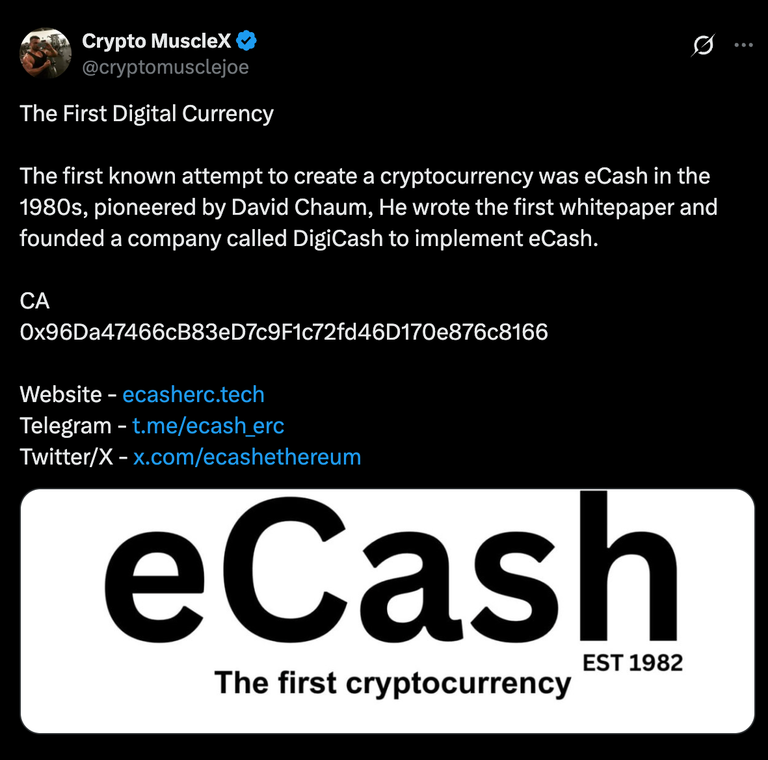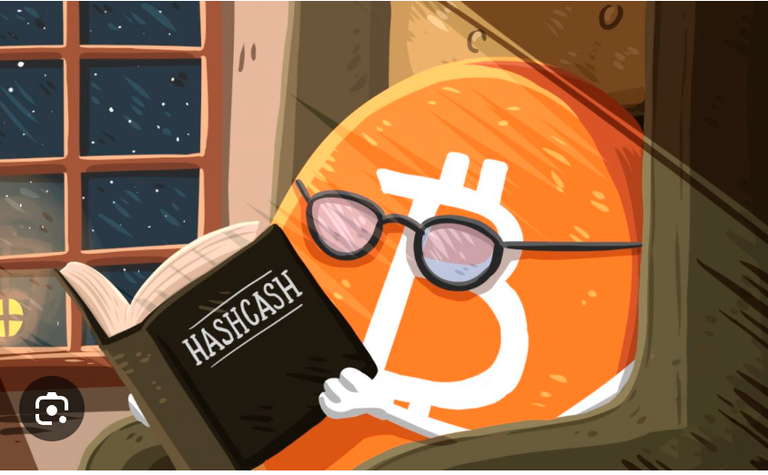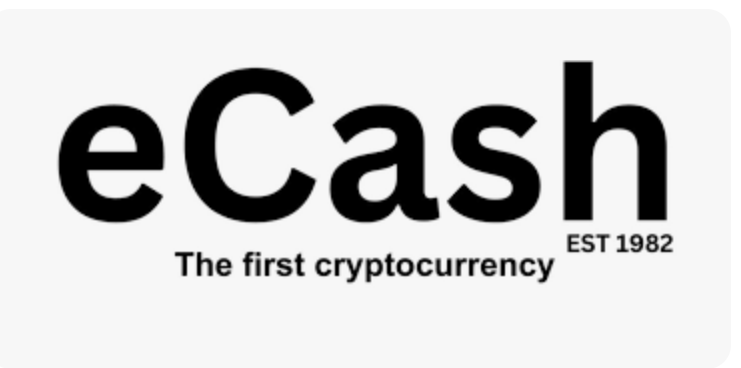Introduction
The history of cryptocurrency tells us that Bitcoin was not the first attempt at an cryptocurrency, it is the most successful.
David Chaum created eCash in 1990, which is regarded by many to be the first cryptocurrency.
Several attempts were made to create a cryptocurrency before Bitcoin.
history says eCash, B-money, Bit Gold, and Hashcash were predecessors to Bitcoin and influenced its creation.
But although Bitcoin may not have been the very first attempt at a decentralized cryptocurrency, it has unquestionably been the most successful thus far.
Body
- Cryptocurrency history says eCash, B-money, Bit Gold, and Hashcash were predecessors to Bitcoin and influenced its creation.
eCash

- Cryptocurrency history tells us that eCash was the first cryptocurrency.
In 1983, American cryptographer David Chaum proposed a form of electronic cash. He conceptualized a token currency that could be transferred between individuals safely and privately; the similarities to modern-day cryptocurrencies are striking.
David Chaum created eCash in 1990, which is regarded by many to be the first cryptocurrency.
Chaum developed a so-called "blinding formula" to be used to encrypt information passed between individuals. "Blinded Cash" could thus be safely transferred between individuals, bearing a signature of authenticity and the ability to be modified without traceability.
Chaum founded DigiCash to put his concept into practice several years later by creating the first cryptographic electronic money called eCash.
Although DigiCash went bankrupt in 1998, the ideas the company put forward and some of its formulas and encryption tools played an important role in developing later digital currencies.
Source
- David Chaums eCash Website: https://chaum.com/ecash/
- Learn more about eCash here link
- These people use eCash: https://x.com/ecashethereum
- Learn about eCash here:
David Chaum

Learn more about David Chaum here:
David Chaums eCash Website: https://chaum.com/ecash/David Chaum X-page
E-Gold

- In addition to eCash there was also something called eGold.
In 1996, Dr. Douglas Jackson and Barry Downey created electronic money tied to gold's price. This digital currency allowed users to transfer ownership of gold between users of a website, which quickly—albeit unintentionally—became a tool for money launderers and others seeking anonymity in their illegal activities.
Source
- Learn more about eGold here link
Bit Gold

- In addition to E-Gold there was Bit Gold
Nick Szabo, one of the early cryptocurrency pioneers, is credited with creating some of the concepts that eventually led to the creation of Bitcoin. This concept was called Bit Gold and used many of the same blockchain techniques, such as a peer-to-peer network, mining, a ledger or registry, and cryptography.
Perhaps the most revolutionary aspect of the Bit Gold concept had to do with its movement away from centralized status. Bit Gold aimed to avoid reliance on centralized currency distributors and authorities. Szabo's aim was for Bit Gold to reflect the properties of real gold, thereby enabling users to eliminate the middleman. Bit Gold, like other attempts, was ultimately unsuccessful. However, it too inspired digital currencies that would enter the market a decade or more after its introduction.
Source
- Learn more about Bit Gold here: link
B-Money

-in addition to bit Gold there was B-Money.
In 1998, an anonymous developer using the name Wei Dai proposed an "anonymous, distributed electronic cash system" called B-money. Dai suggested two different protocols, including one that required a broadcast channel that was both synchronous and unjammable. Ultimately, B-money was never successful and it differed from Bitcoin in many ways. Nonetheless, it was also an attempt at an anonymous, private, and secure electronic cash system.
In the B-money system, digital pseudonyms would be used to transfer currency through a decentralized network. The system even included a means for contract enforcement in-network without using a third party. Although Wei Dai proposed a whitepaper for B-money, it was ultimately unable to garner enough attention for a successful launch.
Source
- Although it failed to launch or even have it's white paper published, it was known to Satoshi Nakamoto, the creator of bitcoin. The Bitcoin Wite Paper cites this cryptocurrency attempt in the white paper: https://bitcoin.org/bitcoin.pdf.
Nakamoto referenced elements of B-money in the Bitcoin whitepaper roughly a decade later, so the impact B-money had on the digital currency craze is undeniable.
Source
Hashcash

- The next cryptocurrency attempted before bitcoin was HashCash.
Developed in the mid-1990s, Hashcash was one of the most successful pre-bitcoin digital currencies. Hashcash was designed for various purposes, including minimizing email spam and preventing DDoS attacks. Hashcash opened up a wide array of possibilities that would only be realized nearly two decades later. Hashcash used a proof-of-work algorithm to aid the generation and distribution of new coins, much like many contemporary cryptocurrencies. Hashcash also ran into many of the same problems as today's cryptocurrencies; in 1997, facing an increased processing power need, Hashcash eventually became less and less effective. Even though it eventually fizzled out, Hashcash saw a significant degree of interest in its heyday. As a result, many of the elements of the Hashcash system worked their way into Bitcoin's development.
Source
Summary
- The TLDR (To Long Didn't Read)
Bitcoin is the oldest surviving crypto, but it was not the first cryptocurrency.

- Bitcoin was released (whitepaper) in 2008.
- Bitcoin was not the first attempt to create a digital money or currency.
- Many earlier attempts were referenced by Bitcoin's creator(s) in the whitepaper which brought it all to the public's attention in 2008.
- eCash was the first known attempt to create a cryptocurrency in the 1980s.
- David Chaum wrote the first whitepaper and established a company called DigiCash that would ultimately make eCash.
- Before Bitcoin cryptocurrency history says earlier attempts to creata a cryptocurrency include eCash, B-money, Bit Gold, and Hashcash. They are gone, but live on in bitcoin, as they influenced its creation and some are cited in the bitcoin whitepaper for elements of them used in bitcoin.
- Cryptocurrency, as it's known today, is the result of many years of development by many people.

Bitsocial
- That’s it for this article.
- I invite you to join #bitsocial is a place to read and comment about Bitcoin, and even earn bitcoin via earning and trading it for bitcoin. But you may fall in love with Hive and start stacking Hive also!
- If you are already on Hive Join Bitsocial here : LINK
- Post articles there or by tagging articles #bitsocial
- Hive is the most advanced social media platform where you have Web 3.0 features and you earn cryptocurrency.
@shortsegments
About Me

- I have been a writer on Hive / Steemit for seven years, and my focus is on the financial aspects of cryptocurrency, the blockchain, non-fungible digital tokens, stablecoins, decentralized finance and tokenized assets.

What is Hive.??
Hive is a social media platform and many diverse communities on the Hive Blockchain
Here on hive you can post content, upvote content and comment on content to earn or get paid in cryptocurrency tokens called Hive.
You can earn cryptocurrency by writing long articles, short articles, posting videos, pictures, memes or other content.
Then you can then sell these tokens for your countries currency, US Dollars or other cryptocurrencies like Bitcoin, Ethereum or Stablecoins like USDT, USDC .
Join Hive here My free referral link: JOIN4FREE

Posted Using INLEO


Came across this again and it’s a cross post. The write up was very eye opening and I was glad so read through it…
Worth reading felas